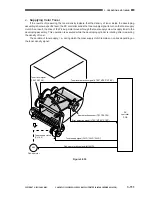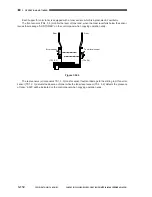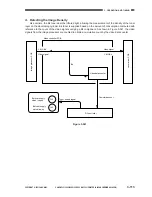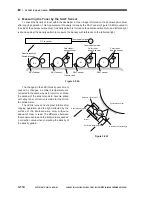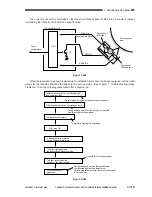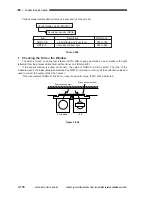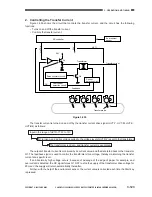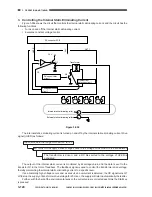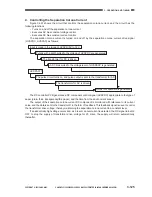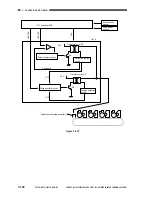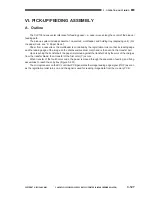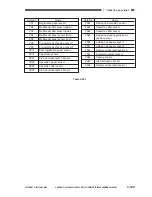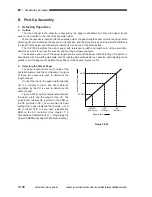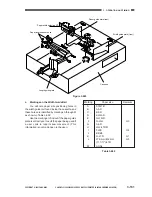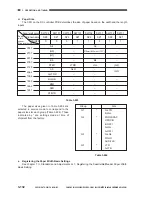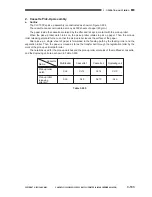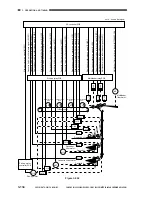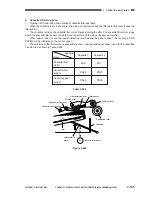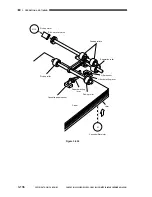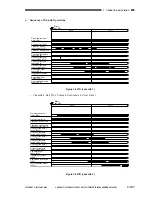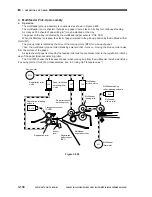
COPYRIGHT © 2001 CANON INC. CANON CLC1000/1000S/3100 REV.2 MAY 2001 PRINTED IN JAPAN (IMPRIME AU JAPON)
3-125
3. OPERATION AND TIMING
4. Controlling the Separation Corona Current
Figure 3-557 shows the circuit that controls the separation corona current, and the circuit has the
following functions:
• Turns on and off the separation corona current.
• Executes AC bias constant voltage control.
• Executes DC bias constant current control.
The separation corona current is turned on and off by the separation corona current drive signal
(HVSPDC, HVSPAC) as follows:
Input is made in the range of HVSPD=0V to 12V.
Pulses with a width suited to the voltage of HVSPDC are generated.
The transformer for DC is driven.
A DC bias suited to the voltage level of HVSPEDC is generated.
HVSPAC=1
The pulse circuit turns on, and pulse output is sent to the transformer for AC.
The transformer for AC is driven.
A bias for separation is generated.
The DC controller PCB generates a DC component control signal (HVSPDC) appropriate to the type of
paper (plain, thick, transparency/thin paper) and the data from the environment sensor.
The output of the separation corona current DC component is monitored with reference to its current
value, and the data is sent to the transistor Q1 in the form of feedback. This feedback signal is used to control
the transformer drive voltage, thereby maintaining the separation corona current to a constant level.
If an abnormally high voltage occurs and, as a result, an overcurrent is detected, the OC signal turns Q2
OFF to stop the supply of transformer drive voltage for 20 msec; the supply will return automatically
thereafter.
Summary of Contents for Vizcam 1000
Page 12: ......
Page 30: ......
Page 44: ......
Page 86: ......
Page 254: ......
Page 372: ......
Page 374: ......
Page 418: ......
Page 438: ......
Page 442: ......
Page 754: ......
Page 764: ......
Page 766: ......
Page 840: ...0501GR PRINTED IN JAPAN IMPRIME AU JAPON This publication is printed on 100 reprocessed paper...

